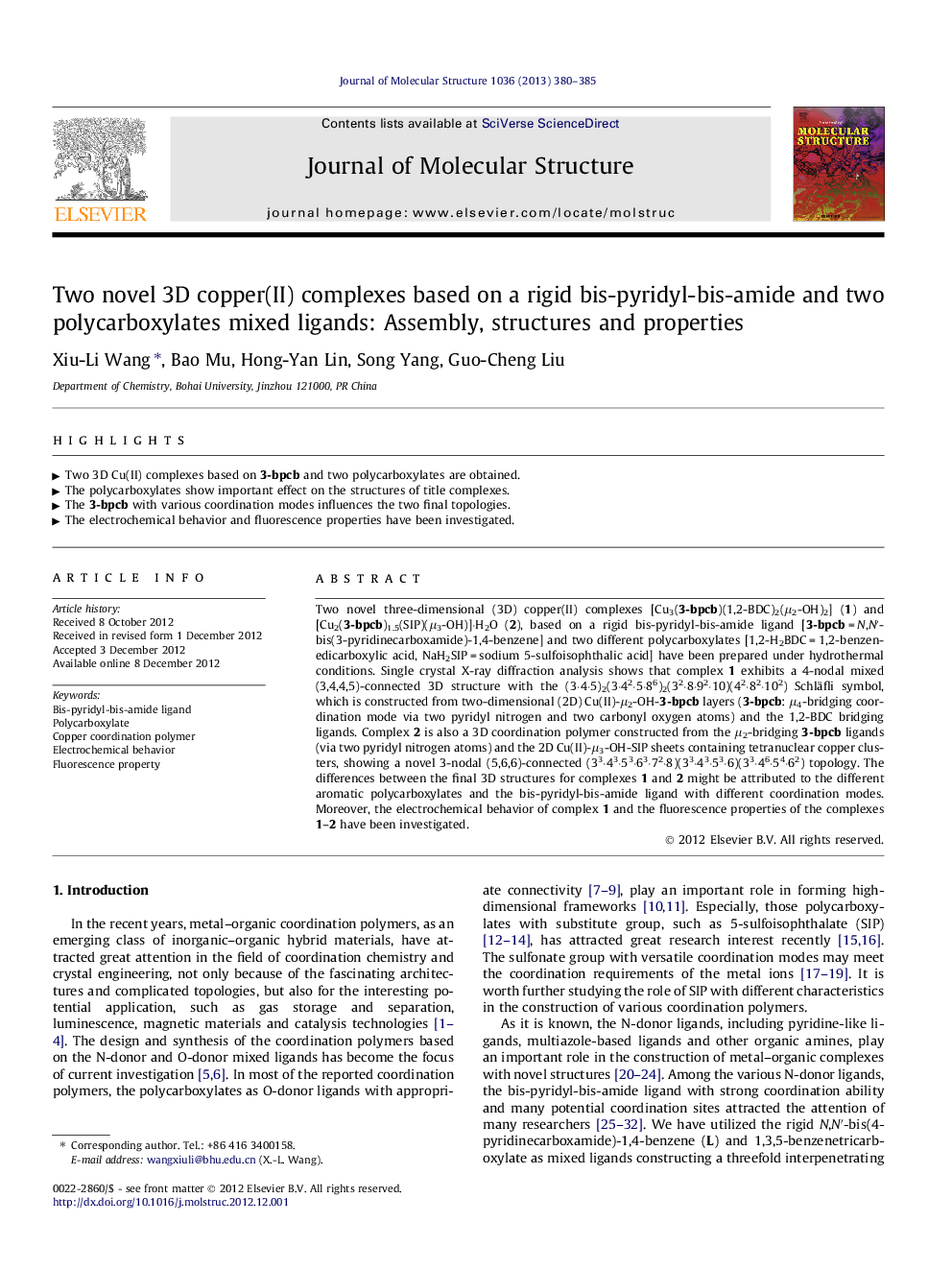| Article ID | Journal | Published Year | Pages | File Type |
|---|---|---|---|---|
| 1406152 | Journal of Molecular Structure | 2013 | 6 Pages |
Two novel three-dimensional (3D) copper(II) complexes [Cu3(3-bpcb)(1,2-BDC)2(μ2-OH)2] (1) and [Cu2(3-bpcb)1.5(SIP)(μ3-OH)]·H2O (2), based on a rigid bis-pyridyl-bis-amide ligand [3-bpcb = N,N′-bis(3-pyridinecarboxamide)-1,4-benzene] and two different polycarboxylates [1,2-H2BDC = 1,2-benzenedicarboxylic acid, NaH2SIP = sodium 5-sulfoisophthalic acid] have been prepared under hydrothermal conditions. Single crystal X-ray diffraction analysis shows that complex 1 exhibits a 4-nodal mixed (3,4,4,5)-connected 3D structure with the (3·4·5)2(3·42·5·86)2(32·8·92·10)(42·82·102) Schläfli symbol, which is constructed from two-dimensional (2D) Cu(II)-μ2-OH-3-bpcb layers (3-bpcb: μ4-bridging coordination mode via two pyridyl nitrogen and two carbonyl oxygen atoms) and the 1,2-BDC bridging ligands. Complex 2 is also a 3D coordination polymer constructed from the μ2-bridging 3-bpcb ligands (via two pyridyl nitrogen atoms) and the 2D Cu(II)-μ3-OH-SIP sheets containing tetranuclear copper clusters, showing a novel 3-nodal (5,6,6)-connected (33·43·53·63·72·8)(33·43·53·6)(33·46·54·62) topology. The differences between the final 3D structures for complexes 1 and 2 might be attributed to the different aromatic polycarboxylates and the bis-pyridyl-bis-amide ligand with different coordination modes. Moreover, the electrochemical behavior of complex 1 and the fluorescence properties of the complexes 1–2 have been investigated.
► Two 3D Cu(II) complexes based on 3-bpcb and two polycarboxylates are obtained. ► The polycarboxylates show important effect on the structures of title complexes. ► The 3-bpcb with various coordination modes influences the two final topologies. ► The electrochemical behavior and fluorescence properties have been investigated.
